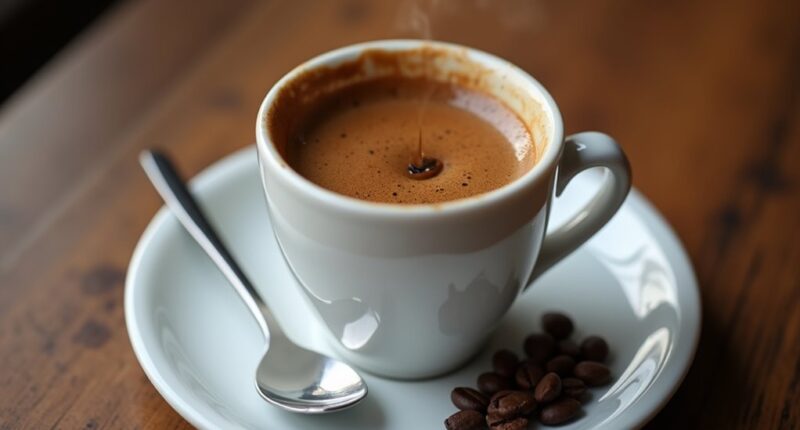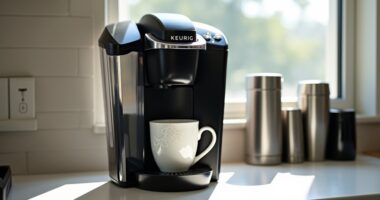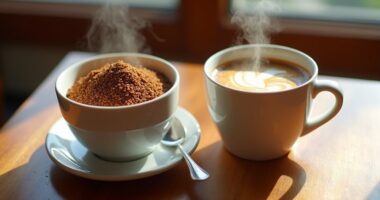Decaf espresso is your go-to for enjoying espresso without the caffeine buzz! With about 97% of caffeine removed, you still get all that rich, yummy flavor without the jitters. There are different ways to decaffeinate, which can change the taste a bit, but no worries! You can still sip on a delicious shot that’s low in caffeine—just 3 to 15.8 mg per shot. If you’re curious about brewing and flavor tips, you’re in for a treat!
At a Glance
- Decaf espresso is coffee with about 97% of its caffeine removed, allowing enjoyment without jitters.
- Various decaffeination methods exist, including chemical solvents and the chemical-free Swiss Water Process.
- The flavor profile of decaf espresso varies by roast type, with dark roasts being bold and smoky, while lighter roasts are brighter and more complex.
- Proper brewing techniques, such as grind size and extraction time, are crucial for enhancing the flavor of decaf espresso.
- Decaf espresso contains 3 to 15.8 mg of caffeine per shot, significantly less than regular espresso’s 63 mg.
Definition of Decaf Espresso
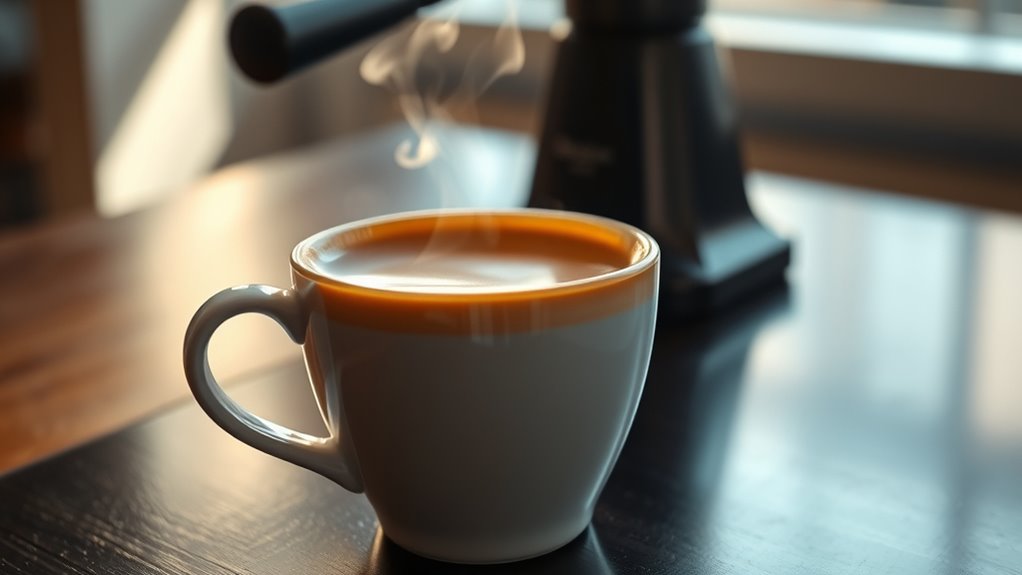
Decaf espresso is like the cool, laid-back cousin of regular espresso—same great flavor, just without the caffeine buzz that sometimes feels like a roller coaster ride.
You see, decaf origins trace back to a time when people wanted to sip espresso without the jitters. It’s made from beans with about 97% of caffeine removed, so you can enjoy that rich taste without the wild ride.
And forget the espresso myths—any coffee bean can be decaffeinated! Additionally, the process of decaffeination can significantly affect the flavor profile of the beans, ensuring that even without caffeine, the espresso remains delicious.
Decaffeination Processes
When you think about how decaf espresso gets its chill vibe, you might be surprised at the cool science behind it!
There are several decaffeination methods to choose from. Some use chemical solvents like methylene chloride or ethyl acetate, which can sound scary, but don’t worry! The residual solvents are usually gone by the time you sip your espresso.
Then there’s the Swiss Water Process, which skips chemicals altogether and keeps the flavor intact. Each method has its quirks, but they all aim to give you that delicious taste without the caffeine kick—perfect for those late-night coffee cravings! Additionally, choosing low acid organic coffee can enhance your espresso experience by minimizing acidity, making it gentler on the stomach.
Brewing Techniques for Decaf Espresso
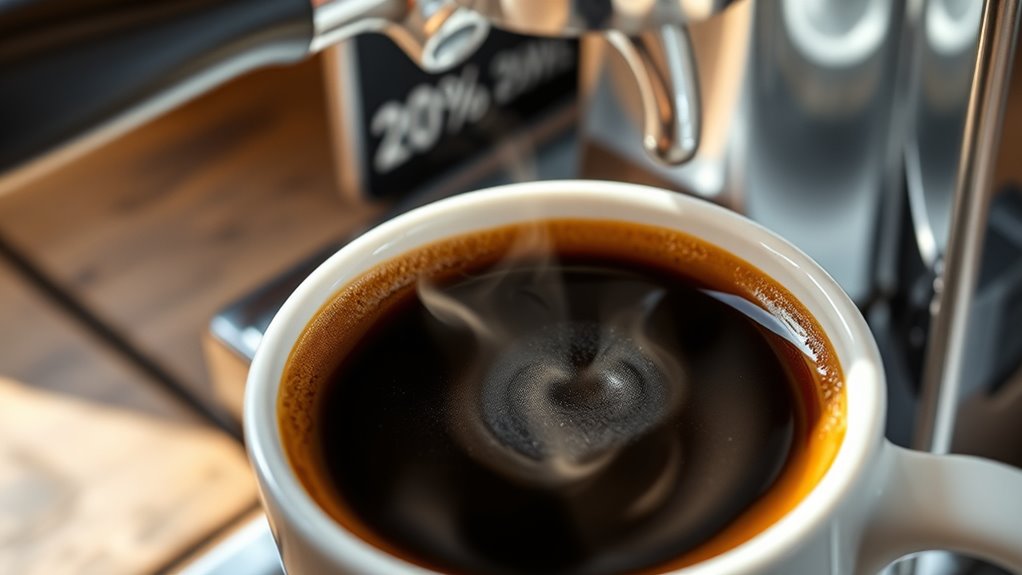
You’ve got your decaf beans ready, and now it’s time to turn them into something delicious!
First, make certain you’ve got the right grind size—think powdered sugar. Too coarse, and you’ll end up with a sad, watery shot. Aim for an extraction time of 20-30 seconds, adjusting the grind if it pulls too fast or slow.
Don’t forget to preheat your machine; nobody likes lukewarm coffee! Tamping evenly guarantees that water flows just right, avoiding any bitter surprises. For optimal results, consider using the best decaf coffee methods to enhance flavor and quality.
With the right technique, you’ll create a smooth, satisfying decaf espresso that’ll have you and your friends coming back for more!
Flavor Profile and Roast Preferences
While you might think all espresso is created equal, the flavor profile of decaf espresso can be a delightful surprise!
You’ll find that decaf flavor varies greatly with the roast. Dark roasts deliver a bold, smoky taste, while medium roasts balance sweetness and body beautifully. If you’re feeling adventurous, try a blonde roast for a bright, floral kick! The best tasting ground coffee often comes from carefully selected beans that enhance the overall experience.
Just remember, the roast impact is key—darker means smoother, lighter means complex.
Caffeine Content and Health Considerations
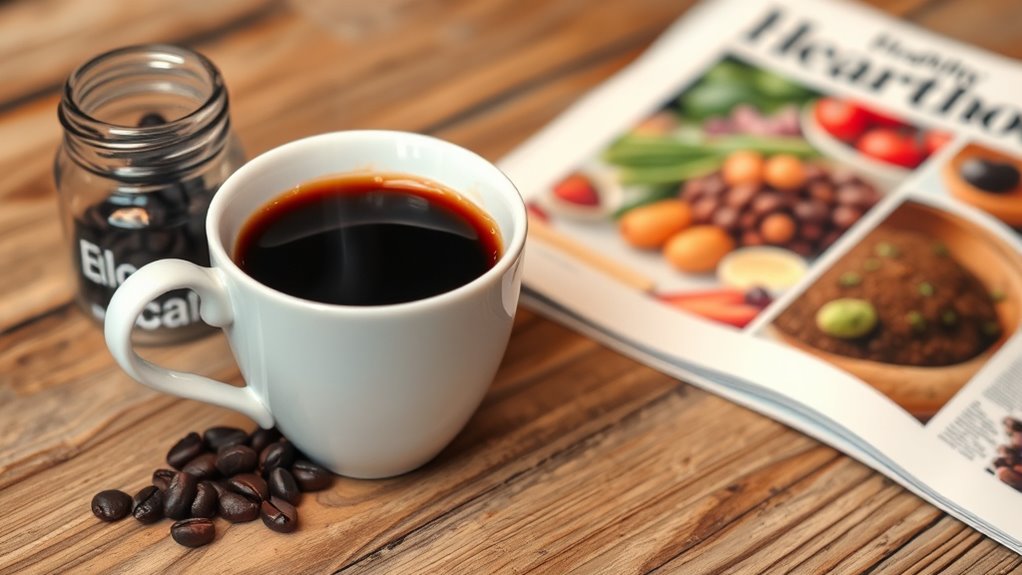
Espresso lovers, rejoice! Decaf espresso packs a punch without the jitters, containing just 3 to 15.8 mg of caffeine per shot. That’s a fraction of regular espresso’s 63 mg.
But hey, if you’re caffeine sensitive, even that small amount can stir up reactions. It’s wise to keep an eye on your intake, especially if you’re pregnant or have kids. You wouldn’t want a little caffeine causing trouble, right?
Plus, some folks are allergic, so it’s best to skip all caffeinated goodies. Enjoy your decaf, but remember, health effects can sneak in, even from the seemingly innocent cup! Additionally, low acid coffee options can provide a smoother experience for those with sensitive stomachs.
Popularity and Consumer Benefits
If you’ve ever found yourself craving that rich, bold coffee flavor without the caffeine buzz, you’re definitely not alone!
Decaf espresso is booming, and it’s not just for the old folks anymore. Here’s why you might want to hop on the decaf train:
- Rising health awareness is steering consumer preferences.
- Younger folks are leading the decaf trends.
- You can enjoy coffee flavor without the jitters.
- It’s perfect for evening sips with friends.
- Global market growth means more flavors to explore!
- Many consumers are seeking low acid coffee options that are easier on the stomach.
With its growing popularity, decaf is becoming a delicious option for everyone, so why not give it a try?
Home Brewing Decaf Espresso
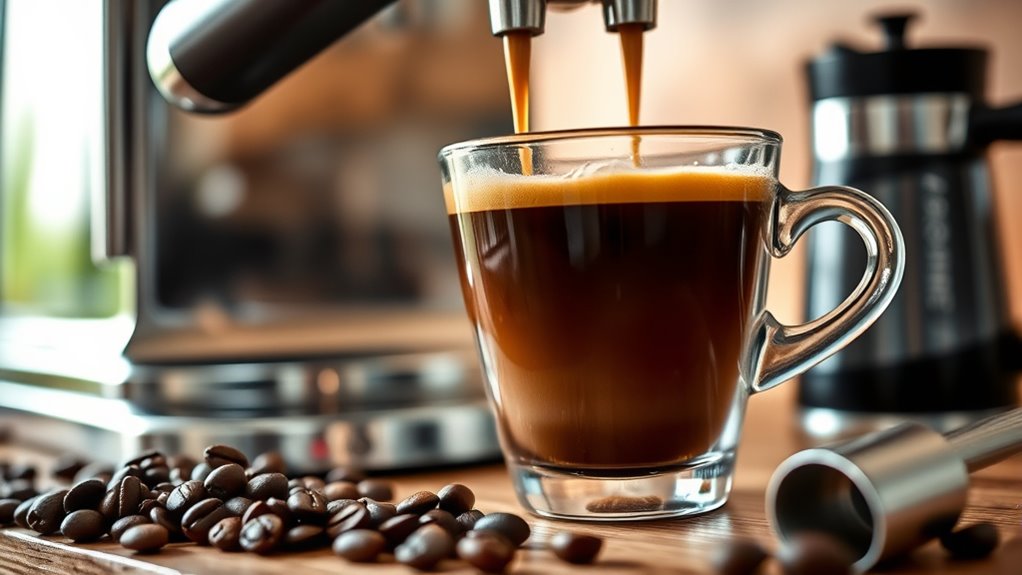
Brewing your own decaf espresso at home can feel like a little coffee adventure, and trust me, it’s totally worth it!
You’ll need a good espresso machine, a burr grinder for that ultra-fine grind, and a tamper to pack those grounds just right.
Don’t forget a kitchen scale—precision is key! Use fresh, high-quality decaf beans, ideally medium to dark roast, and grind them right before brewing.
Adjust your water temperature and brewing time for the perfect shot. Choosing the right espresso machine can make a significant difference in the quality of your brew.
With a little practice, you’ll impress friends and enjoy delicious decaf espresso right from your kitchen.
Let the brewing begin!
